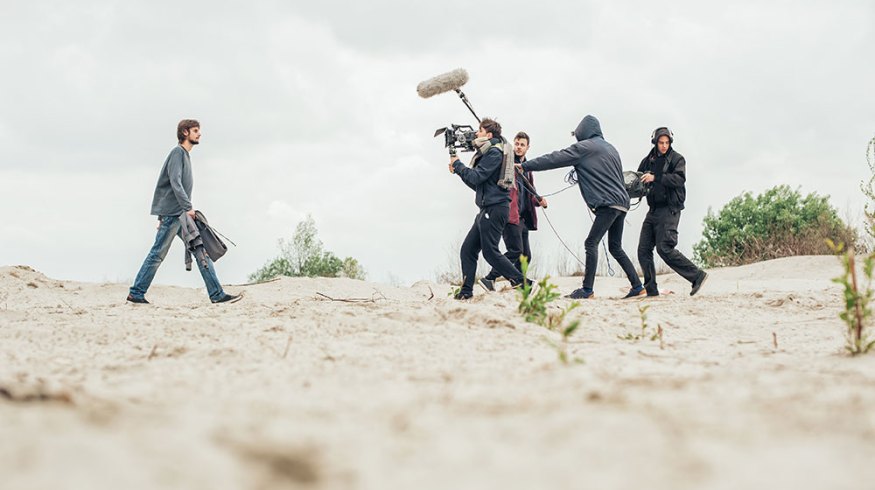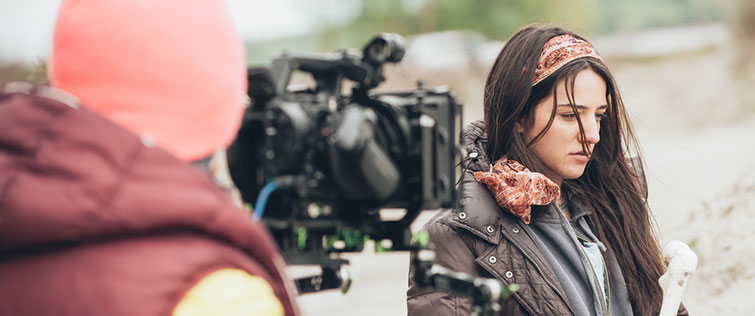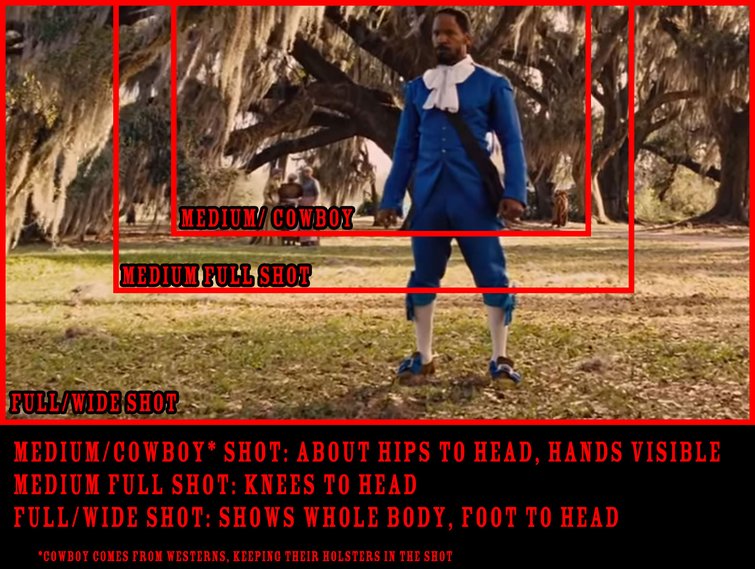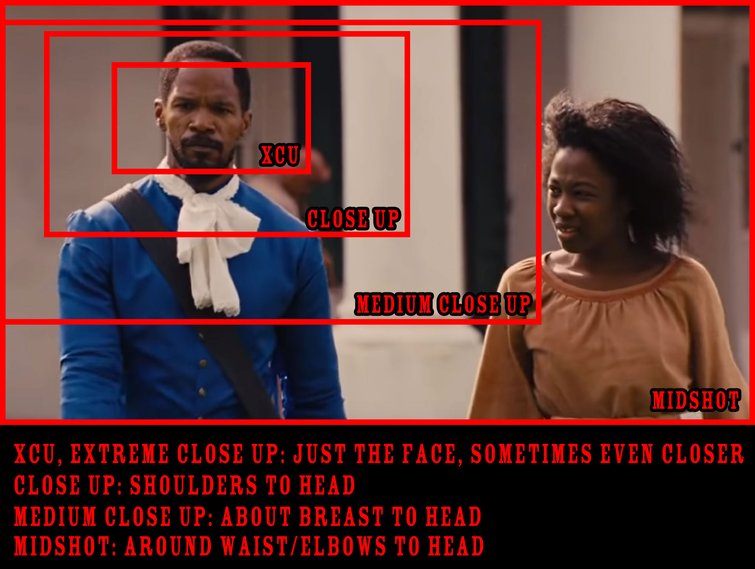
The New and Non-Actor’s Crash Course: Part One
In the first of our two-part series, we’ll cover some things you’ll need to know as an actor (or filmmaker) if you’re going to be in front of the camera.
Either you’re a brand new actor or you’re a filmmaker and you have non-actors coming to work on your set. If you’re a new or non-actor, you want to be prepared and professional. If you’re a filmmaker, you don’t have time, nor do you want to break down everything your non-actors need to know. So, you need a crash course to prepare yourself or send to your new cast.
Well, let’s go.
Practice Your Lines

Image via guruXOX.
Before you even arrive on set, you want to know your lines! This may sound obvious, but I can’t stress this enough. Don’t just read them a few times to “get familiar” with them — memorize them! Know them word for word, know the scene, understand it. Believe me, having your lines memorized is the first step to good acting. Once you have them memorized, drill them so that they flow comfortably from you. You won’t come off as natural if you’re stumbling over the words or if you’re focused on remembering the lines instead of acting.
Practice delivering them across a range of emotions. If it’s a dramatic scene, make sure you’re able to deliver the lines casually, and vice versa if it’s a casual scene. The reason for this is to make sure you feel comfortable with the dialog, no matter how you deliver it. When you show up to rehearsal or set, the director may have you deliver the lines differently than what you were expecting. If you’re new to acting, this could really throw you off.
Of course, not every gig is going to give you lines beforehand. They may still be writing them or they may have you ad-lib. In this case, just try to learn as much as you can about the character from the director.
Create Your Character
Who are you playing? What’s her backstory? What does she like to do? Who is she? As an actor, you need to embody your character. Sometimes directors or screenwriters will have a very detailed character breakdown explaining the character’s history, hopes and dreams, likes and dislikes, etc. If so, study this and research it. Imagine how this history affects the character in the events of the film, practice ad-libbing as the character, moving as the character.
However, more often than not, you won’t receive such a detailed character breakdown, if any at all. So, make up the character yourself. Of course, you must base the character on how they appear in the script and definitely be sure to talk it over with the director. But don’t be afraid to bring in ideas of your own! You just want to make sure they get approved.
“What if my character only has one scene or just a few lines?” Still develop the role. You don’t need to write this character a biography, but you want to make sure they’re as real as possible. The more you understand about your character, the easier it’ll be for you to embody them.
Take Acting Classes
If you’re brand new to acting (and if you have time prior to production), take an acting class. Make sure it’s a film acting class because theater acting is quite different, and it will show on camera. If you can’t make it to a physical location for classes, check online resources like MasterClass.com or even YouTube.
Practice Landing on Marks
Marks, typically made from paper tape, are tools to help actors stop and stand in the same spot during each take. It’s very important to practice this skill. In theater, if you land a few steps or inches off your mark, it’s not really a problem because the audience can still see you. However, if you don’t land on your mark on a film set, you’ll likely end up either out of frame or out of focus, or both.
When moving toward your mark, you can’t stare at it to make sure you’re on target. You need to be able to do so without looking directly at it. This requires a little practice, but it doesn’t take long to get used to using your peripheral vision to land on your marks naturally. Simply get some masking tape and set up a few “T” marks at various distances from a starting location. Practice walking to them and stopping naturally, only checking your accuracy after stopping. Once that gets easier, pick up the pace! Jog to your mark, run to your mark.
Study Framing
The framing of a shot will determine how much of an actor appears onscreen. This is important because it dictates how much room you, as an actor, have to work with. If the director frames you in a mid shot, the camera sees you from the waist up. So, in that shot, the audience won’t see what your legs are doing but they’ll definitely see what your arms are doing. If you’re in a close-up, the audience will only see your face and not the way your hands move when you talk.

Image via Django Unchained (The Weinstein Company).
If you’re in a wide shot, you have much more freedom. You can move around a few steps, you can incorporate your legs, and you can even flail your arms! But the closer we get to a close-up, the less you can move before stepping out of frame.
You also need to understand framing because it affects body language and props. So much of how we communicate comes from body language, and we often talk with our hands. Body language is crucial to acting because it brings realism and depth to the character. Hardly any normal person stands like a statue when they speak, especially if their voice has any emotion in it. This affects you as an actor because if you’re framed in a medium close-up, we won’t be able to see you gesture with your hands — unless you consciously lift them into the frame.
Often, those hand movements can really emphasize an emotion or differentiate a character’s personality, but only if we can see them. The same goes for props. If you need to wave around a prop or hold a glass, we need to see it. It may feel natural to hold it one way, but depending on the framing, you’ll have to adjust.
Clarify Expectations
Most importantly, you need to clarify expectations for your performance. You need to act, yes, but what else? Things like nudity, kissing (or more), stunts, foods you may have to eat, and costume choices are things to discuss before taking on a role. If you agree to a role thinking your scene is a date at a pizza parlor, then when you show up on set and the director asks you to eat bugs, wear a skimpy outfit, kiss your date, and then take a hit and fall to the floor, you’re in for a surprise.
Yes, it’s the filmmaker’s responsibility to tell you these things ahead of time, but not everyone is professional, and they may neglect to share important information (I’ve been there). Don’t let them trick you! Know the expectations. And if you agree to them, don’t let them change while shooting. This is very important. You won’t make it as an actor just because you’re willing to do anything. You’ll make it as an actor because you’re professional and you practice your craft.
Lastly, make sure you know where the set is and how long it takes to get there — and be sure to show up at least ten minutes early. Practice everything above, establish clear expectations with the filmmaker, and prepare for the shoot! In the next article, we’ll dive right into what to expect and what to know when you’re on set.
Cover image via guruXOX.
Looking for more filmmaking tips and tricks? Check these out.






